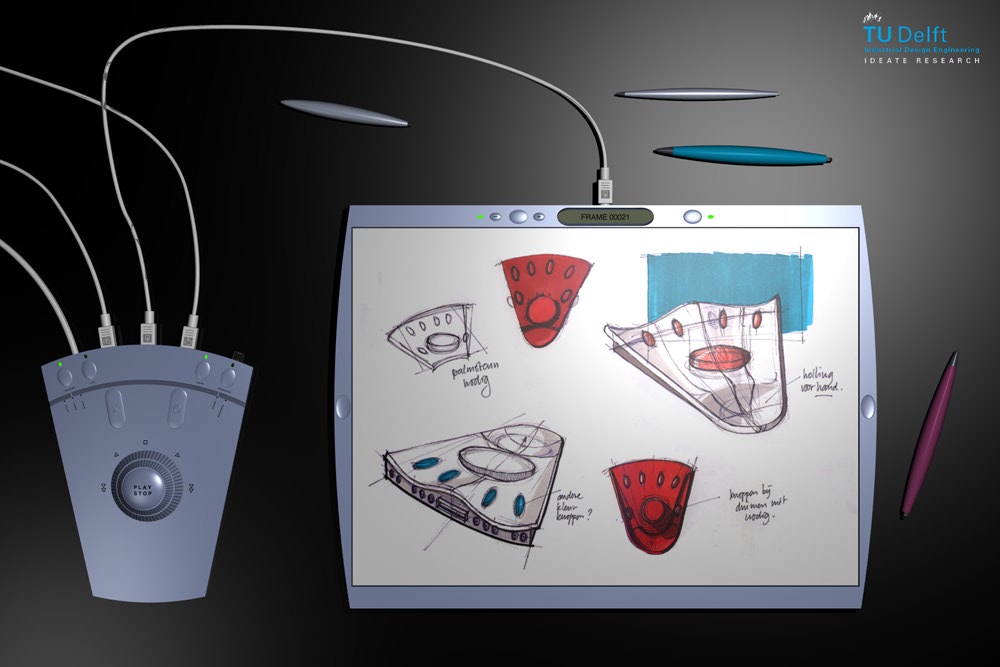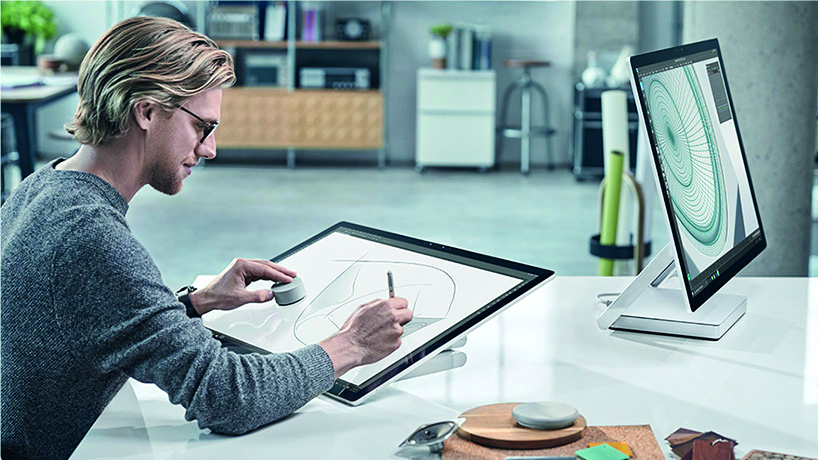Digital Sketching Tool (1992)
Ralph Stuyver
1992
Supervisory Team
Jim Hennessey
IO IDEATE research lab
(now: IDStudioLab)
By the 90s, Computer Aided Design (CAD) systems were commonly used in the later phases of the design process. Sketching continued to be an important activity in the early stages of concept development, but it was barely supported by CAD systems. What kind of hard- and software could help designers with the formation of ideas and concepts in the digital age?
Ralph Stuyver joined a research project on the conceptual phase of industrial design. Together with other IDEATE researchers, he created a digital tool that combined sketching practices with the intuitive approach designers take during ideation. The A3-sized portable screen, called Ideator, could be used with different pens; it also supported two-handed interaction for 3D design, mimicking the clay modelling process. While an A3 screen proved too expensive at the time, many of Ideator’s unique traits have since surfaced in commercially available devices.
Watch the interview:
(English subtitles available)
About the design process:
With the advent of Personal Digital Assistants (PDA’s), Pentium processors and the World Wide Web, computers were becoming part of everyday life. Yet designers still mostly used pencil and paper to develop their ideas.
An A3 sketchbook inspired Ideator’s pad, which was designed to be flat and rotatable to enhance natural hand drawing. Designers could move quickly and easily between projects, and make copies and sketch over them - by using the central dial in conjunction with the ‘select or annotate’ features of Ideator’s pens.

